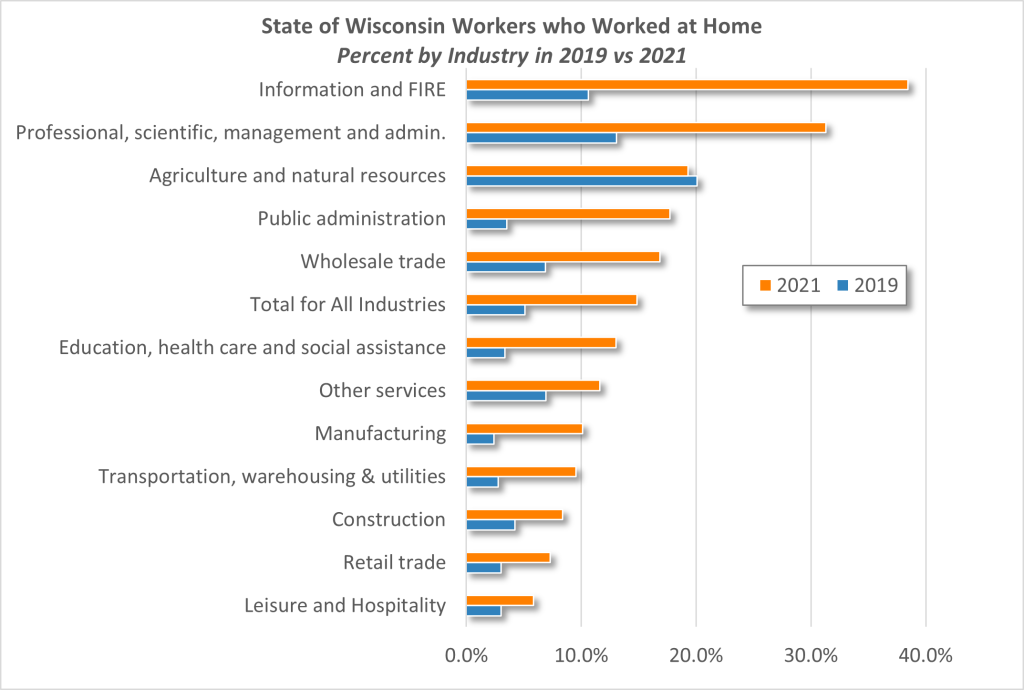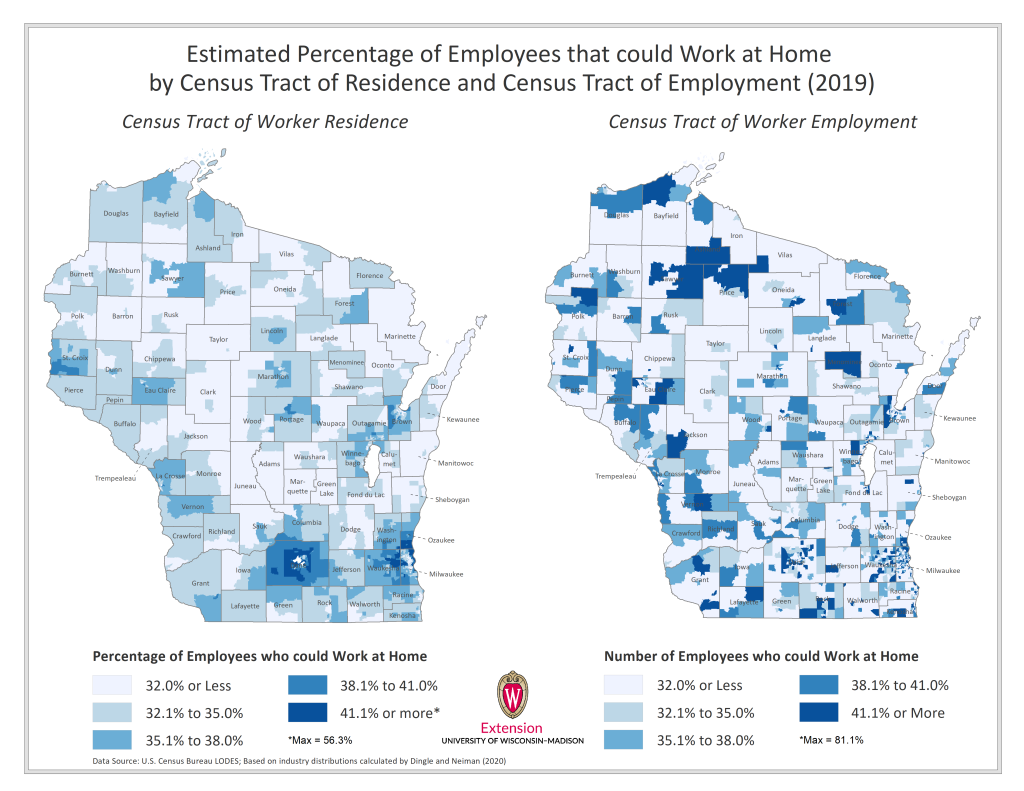(Image Source: Yasmina H / Unsplash)
Wisconsin IDEA
Insight • Data • Economics • Analysis
Upwards of 35 percent of Wisconsin’s Workers Could Work from Home
Reflecting the impacts of the pandemic, the share of Wisconsin employees who reported working from home increased from 5.1% in 2019 to 14.8% in 2021 (U.S. Census Bureau American Community Survey). While the percentage of Wisconsin employees working at home grew by almost threefold over this period, it may be surprising that the increase was not even greater. The statewide average, however, masks the growth of individuals working at home within specific industries. In 2021, large increases and overall shares were found in information and FIRE (finance, insurance, and real estate) and professional, scientific, management and administrative services while the lower shares were reported in leisure and hospitality, retail trade, and transportation, warehousing and utilities. A somewhat lower than average share of employees working from home in education, health care and social assistance may reflect that many individuals in these industries had already returned to their places of work by 2021. Given that these two industries employ many workers, a return to work within these sectors may have also pushed the state average lower.

As the pandemic subsides, it is unknown how many workers will continue to work from home either on a full-time basis or in a hybrid format. While it is likely that the number will remain sizeable, the capacity of employees to work at home will partially depend on future preferences among employers and changes to the tightness of the labor market. Whether or not an individual can work from home also depends on the types of tasks, duties and activities that are required by a given job. Research from the University of Chicago’s Becker Friedman Institute for Economics provides one estimate of which occupations could feasibly be done from home and how these occupations are distributed among industries. Greater shares are found in occupational categories that tend to have higher wages and require a college degree, including computer and mathematical occupations, education training and library occupations, and legal, business, financial and management occupations. The lowest shares are in categories that include production, installation, maintenance, construction, building and grounds cleaning, and food preparation and service occupations.
Applying the distribution of workers who could work from home to Wisconsin’s employment landscape provides perspectives on where employees who could feasibly work from home either live or work. Overall, an estimated 35.1% of Wisconsin’s workers could potentially work from home. The census tracts where these workers live show some variation across the state, but many census tracts have shares near the state average. Notable exceptions to this distribution tend to be in Dane, Milwaukee and Waukesha counties. These three counties are the home of almost 33% of the state’s workers but are the county of residence for 36% of the employees who could work from home.

The census tracts where workers who could work from home are physically employed show a somewhat more discrete geographic dispersion. Not surprisingly, Dane, Milwaukee, and Waukesha counties continue to have a disproportionate share of employment, accounting for 39% of all jobs and 43.2% of jobs that could be done from home. Despite the overall large shares in these counties, the concentration of jobs that could be done from home tends to be localized in specific census tracts that are often home to large office parks, corporate campuses, or central business districts. Similar patterns are found in other counties where these types of jobs are often located in downtowns or county seats. In some instances, a census tract may show a notable share of jobs that could be done from home where there is a large dependence on school district or medical center employment. Other census tracts in rural areas stand out where there is a large corporate headquarters located such as Organic Valley in Vernon County. Regardless of the specific location, businesses that depend on worker expenditures from employees in these areas may face challenges should employment shift to work-at-home arrangements.














